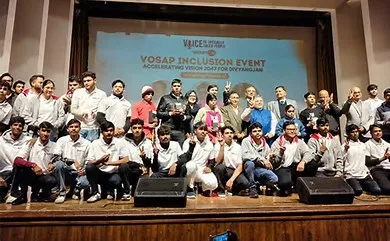Last year, Law minister Kiren Rijju and then Chief Justice of India (CJI) S.A. Bobde had shared a common sentiment by stating that AI can help reduce the backlog of pending cases and sustainable justice delivery. That very year, India saw the Supreme Court launching by the hands of Justice Bobde the first AI-driven research portal by the name of Supreme Court Portal for Assistance in Court’s Efficiency (SUPACE). SUPACE uses a process called machine learning (ML) that is a sub-category of AI and has the capacity to emulate intelligent human behaviour and perform complex tasks in a way similar to human beings. SUPACE will use ML to process large databanks and cases. Justice Bobde had stated that the usage of this AI will be a mix of human and artificial intelligence and shall not be used for any kind of decision-making and shall instead be primarily used for collection and analysis of data. A smart decision, considering the case of State v. Loomis in the USA where the Supreme Court of Wisconsin had to tide through hot waters a few years ago due to their usage of Correctional Offender Management Profiling for Alternative Sanctions (COMPAS)—a risk assessment tool. Sometime in the month of February back in the year 2013, Eric Loomis was caught driving a car that was used in a shooting. Upon being arrested, he pleaded guilty to eluding an officer. The judge, while determining his sentence, took his criminal record and the COMPAS score into consideration. The AI, classifying Loomis as a high-risk, re-offender led to him being sentenced for six years. Following this, Loomis had appealed the ruling based on the very point that is an inherent issue with all AI usage—the black box issue. He stated that the fact that the outcome of an algorithm whose inner workings are impenetrable and unexaminable is a ground which the judge violated in due process. Algorithm has so ubiquitously taken over our lives that they might as well be termed as “omnipresent”. While it essentially makes lives easier, complication arises with large-scale processing due to the black box issue. Which is why various countries have resorted to using AI for small-scale judicial administration. For example, the UKbased DoNotPay AI-driven chatbot overturned 160,000 parking tickets in London and New York a few years ago. A Tallinn-based law firm, Eesti Oigusbüroo, provides free legal aid through a chatbot and generates simple legal documents to send to collection agencies. These are quite similar to our own Indian SUPACE. China is another very prolific example of actively using AI in their judiciary, claiming that it has reduced their workloads by more than a third. The AI system has purportedly helped them save costs by $45 billion between 2019 and 2021. Coming back to the Indian scenario, another mention-worthy development is an AI-based method developed by some researchers at IITKharagpur which helped automate the readings of legal case judgements. To expand on that, they essentially developed two deep neural models to understand the rhetorical roles of sentences in a legal case judgement. Like all things, using AI in judicial administration too is a double-edged sword. Based on what the examples from all around the world tell us, using AI in judiciary for small and miscellaneous matters may not be an issue since then the black box issue does not become a problem. Matters that do not require decisionmaking on behalf of the AI may be allowed to be assisted to help clear the huge backlog of pending cases that the Indian courts have amassed. But when it comes to matters that require decisionmaking, it is best, in my humble opinion, best left to the human judges “fallible to the human sentiments and idiosyncrasies”, not merely because AI is yet to understand the concept of ‘concepts’ but also because there is always the risk of bias hanging overhead like the sword of Damocles when it comes to using AI. In conclusion, it is honestly a great leap for the Indian judiciary to embrace tools that will help them in delivering justice smoother and with more accuracy, especially considering the fact that they are generally technology-shy. It is only right that they keep up this zest and mould themselves with the advent that time brings with itself.

















